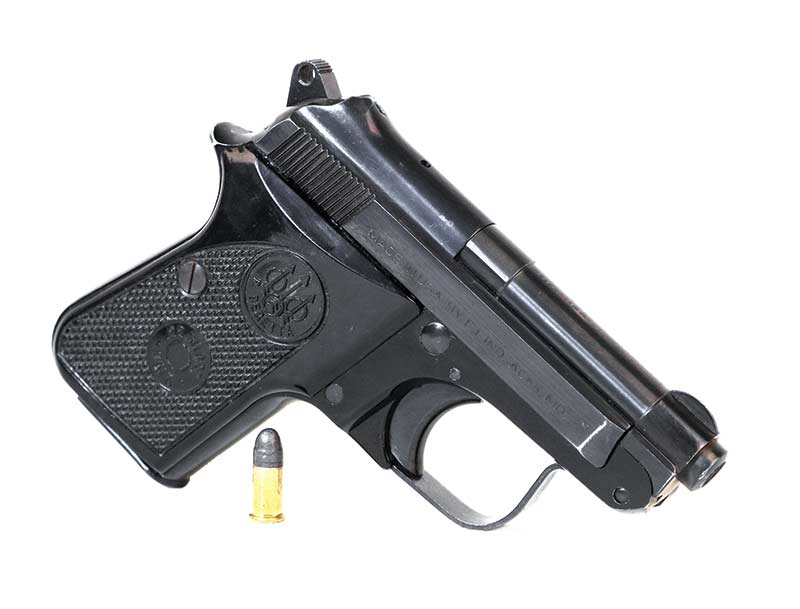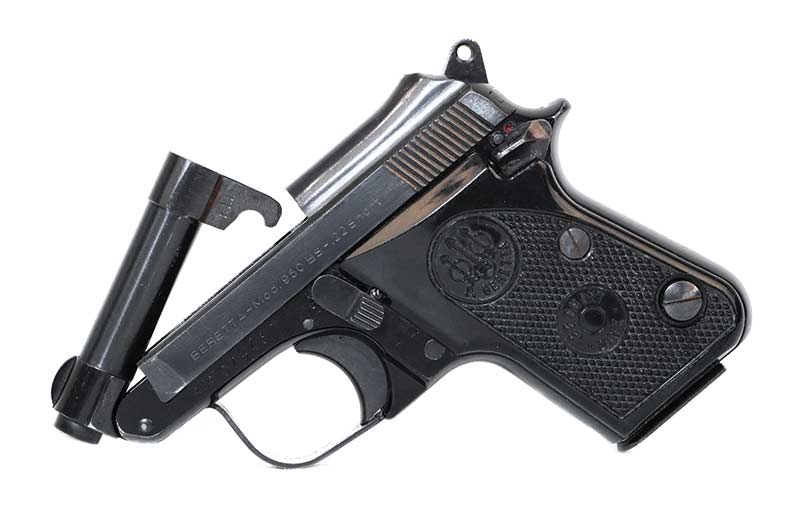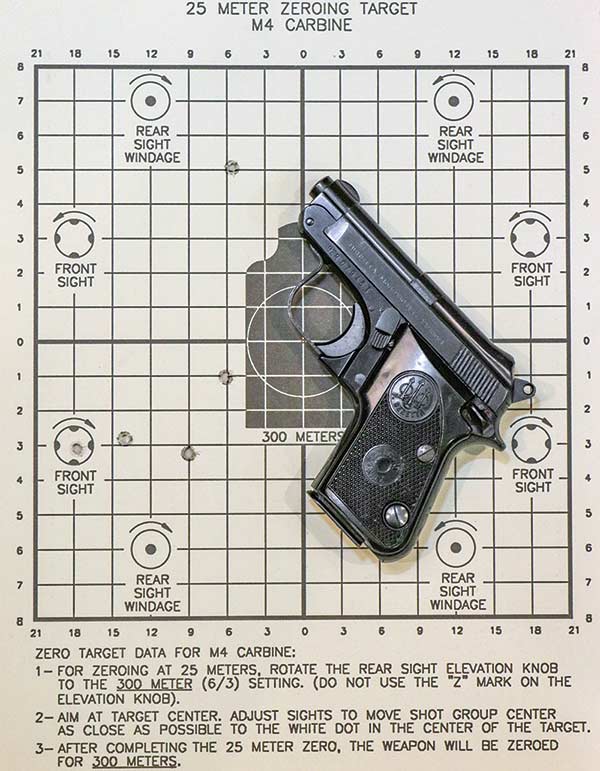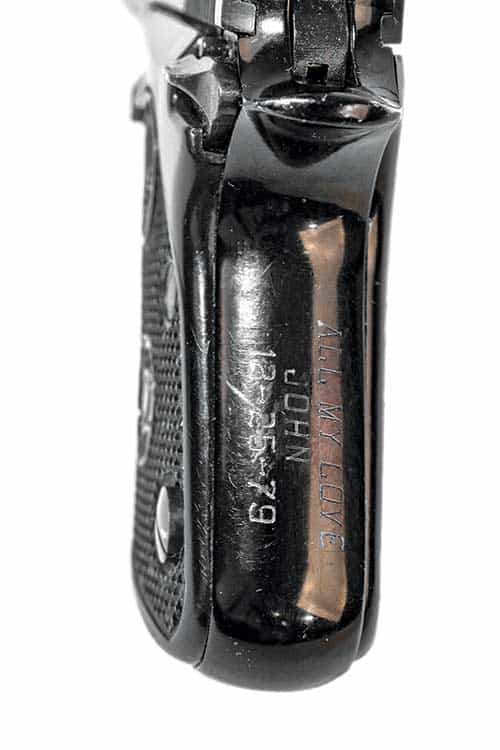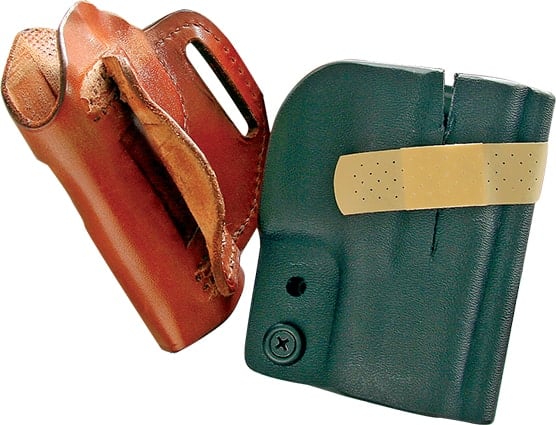The Beretta 950BS Minx Pistol: A Mouse Gun without Much Punch
Fabbrica d’Armi Pietro Beretta is the oldest active manufacturer of firearms on the planet. Beretta weapons have been used in every European war since 1650. Their first official order back in 1526 was for 185 arquebus barrels for the Republic of Venice, for which they were paid 296 ducats. Beretta has arguably more experience producing military and defensive guns than anyone else on earth. Why then might they have contrived the Beretta 950 Minx?
The first 950 rolled off the lines in 1952. Available in both .25 ACP and .22 Short chamberings, the Model 950 featured an aluminum alloy frame with a carbon steel slide and barrel. A single-action design, those first Model 950s had no manual external safeties. Starting in 1968, the guns were redesignated the 950BS, fitted with a manual left-sided thumb safety, and built in America.
The gun’s most distinctive feature was its tip-up barrel system. The spring-loaded barrel could be released by thumbing a lever forward on the left side of the frame. The magazine could, therefore, theoretically be carried loaded with the chamber empty. You then pop the barrel up, drop in a round, and go to town. No sensible person would ever dare use such a gun for personal defense.
Seriously?
The Beretta 950 is absolutely Lilliputian. It is lost in a typical adult human hand. It is also fascinating.
There is no extractor. The recoil from the cartridge cycles the slide, and the empty case just bounces off of the left-sided ejector to launch wherever. My gun has been thoroughly reliable, regardless.
The magazine carries six rounds. The magazine release looks like a big, oversized screw on the left aspect of the frame. There is a tiny little peg you can use to help depress the magazine follower and assist in loading chores.
The left-sided thumb safety is easy enough to manipulate. The single action trigger is decent, better than an HK VP70 but worse than a 1911. The little gun enjoys the classic perforated hammer and open slide architecture of most Beretta pistols of its era.
The sights are typical pre-war European pocket pistol chic. I suppose there was some rule some place that guns had to have sights, but they are utterly worthless. The front sight is part of the barrel, while the rear sight is a small groove cut into the back of the slide. My gun shoots about 3″ left at seven meters.
Designed in 1857 for the first Smith & Wesson revolver, the .22 Short was America’s first mass-produced metallic cartridge. Typical .22 Short rounds push a 29-grain bullet. While the .22 Short was initially developed for self-defense applications, its anemic performance makes it best suited for recreational shooting in gallery rifles and the like.
My Minx produces around 640 feet per second. To put that in perspective, a typical major league fastball crosses the plate at around 147 feet per second. My Minx indeed tosses bullets faster than you can throw them, but not by any enormous margin.
Serendipitous Romance
I bought my Minx at a small online gun auction. If you’ve ever bought a gun that way, there is just so much information you can glean from those tiny pictures. I once purchased a gorgeous Webley Mk VI that arrived irrevocably broken. I have also landed an Enfield No. 4 T sniper rifle that was perfect, matching and unfired. You win a few; you lose a few. My Minx came replete with an unexpected love story.
Engraved along the barrel is the name “Peggy Francine.” Lightly cut into the backstrap is “All My Love, John, 12-25-79.” Apparently, Santa was good to Peggy Francine that year.
I love stuff like this. John likely bought Peggy Francine this anemic little Minx for “personal protection.” Did she even want it? We guys are notorious for buying our women stuff like this because we think it’s cool. Or perhaps she was genuinely moved by the gift. I hope it was the latter.
Running this recoilless little trinket is indeed great fun, but there is no point to it. There are lots better ways to ventilate repurposed beverage cans on the range, and I honestly might sooner have a proper baseball bat in the close fight. However, for Peggy Francine, it was indeed a tangible reminder John loved her. Poignant, sweet, sincere, and cool, that fact alone gives this worthless little pistol a purpose both deep and powerful.



